 W
WThe 1st Bersaglieri Regiment is an active unit of the Italian Army based in Cosenza in the Calabria region. The regiment is part of the Italian infantry corps' Bersaglieri speciality and operationally assigned to the Bersaglieri Brigade "Garibaldi". The Regiment is among the most experienced units of the Italian Army in missions abroad, and is the regiment with the highest number of decorations for military valour of the army.
 W
WThe 1st Croatian Guards Corps was a special formation of the Croatian Army directly subordinated to the Ministry of Defence rather than the General Staff of the Armed Forces of the Republic of Croatia and reporting directly to the President of Croatia. The corps was established in 1994 by the amalgamation of various HV special forces. The 2,500-strong unit was organised into the 1st Croatian Guards Brigade, a multi-purpose special forces combat unit, and four battalions tasked with ensuring the security of the President of Croatia and carrying out ceremonial duties. The HGZ took part in a number of military operations during the Croatian War of Independence and the Bosnian War. It was disbanded in 2000, when its components were amalgamated with other HV units to form the Special Operations Battalion, the 350th Military Intelligence Battalion, and the Honour Guard Battalion.
 W
W42 Squadron SAAF is a disbanded squadron of the South African Air Force, active from 1945 to 2000. The squadron's main role was to spot enemy artillery. The unit was formed in 1945 as 42 AOP Flight, flying Austers under command of an officer of the SA Artillery and was the only army aviation unit flying for South African forces during World War II.
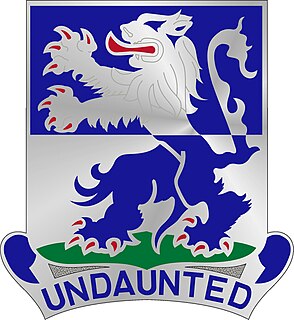 W
WThe 119th Infantry Regiment was an infantry regiment of the United States Army. The unit was an organic element of the 30th Infantry Division of the United States Army.
 W
WThe 159th Infantry Regiment was an infantry regiment of the United States Army. It served as a part of the 40th Infantry Division for most of its history before deploying in World War II as a part of the 7th Infantry Division.
 W
WThe Älvsborg Coastal Artillery Regiment, designation KA 4, was a Swedish Navy coastal artillery regiment of the Swedish Armed Forces which operated between 1942 and 2000. The unit was based in Gothenburg.
 W
WThe Bergslagen Artillery Regiment, designation A 9, was an artillery regiment of the Swedish Army, which was active from 1943 to 2000. In 2021 the Swedish government decided to re-form the regiment in Kristinehamn as Bergslagen Artillery Regiment with full operational capability reached by 2025.
 W
WCoastal Fleet was until 1994 a Swedish Navy authority with the main task of training the naval ships commanders and crews. After the formation of the authority Swedish Armed Forces in 1994, the Coastal Fleet remained as a unit until 2000.
The Counter Revolutionary Warfare Unit or CRWU was the common name for the First Meridian Squadron, the unit's formal name, which had been disbanded in 2000. It was the only special forces group of the Republic of Fiji Military Forces, and was the brainchild of former Military Commander and former Prime Minister, Major-General Sitiveni Ligamamada Rabuka.
 W
WThe Dalarna Regiment, designations I 13 and I 13/Fo 53, was a Swedish Army infantry regiment that traced its origins back to the 16th century. The regiment's soldiers were originally recruited from the province of Dalarna, where it was later garrisoned. The unit was disbanded as a result of the disarmament policies set forward in the Defence Act of 2000. The regiment will be re-formed in Falun as Dalarna Regiment in the fourth quarter of 2021.
 W
WThe Eastern Army Division, was a division of the Swedish Army that operated in various forms from 1941 to 2000. Its staff was located in Strängnäs Garrison in Strängnäs. The unit was disbanded as a result of the disarmament policies set forward in the Defence Act of 2000.
 W
WEastern Province Command was a command of the South African Army.
 W
WThe Fliegerstaffel 4 of the Swiss Air Force, and belonged to the Überwachungsgeschwader with professional military pilots. Their home base at the dissolution was the Payerne Air Base and the Fliegerstaffel 4 was equipped with Mirage IIIRS. The Fliegerstaffel 4 carried as the coat of arms the AMIR badge. This badge shows on a white ground a falcon head drawn with black lines, the neck of which is filled with blue color. The beak rises above the round badge, above the head of the falcon is the red number 4. Except for the number 4, the badge is identical to the AMIR badge of the Fliegerstaffel 10 and the Fliegerstaffel 3.
 W
WFliegerstaffel 13 of the Swiss Air Force was equipped with Northrop F-5 flown by militia pilots when disbanded in 2000. Their home base at the dissolution was Payerne Air Base. Fliegerstaffel 13 wore a shield-shaped insignia with a blue outer edge, showing an eagle with wings spread out and open claws ready to capture its prey, against a white background, with the red number 13 in front of the upper wing. The old emblem was round with an orange background and black border. It showed the stylized side view of a black wasp looking in the direction of the viewer; over its head was the number 13.
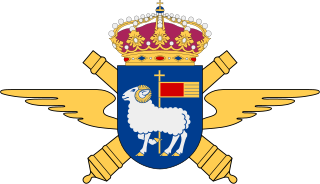 W
WGotland Anti-Aircraft Corps, also Lv 2, was a Swedish Army anti-aircraft unit that was active in various forms between 1944–2000. The unit was based in Visby on Gotland.
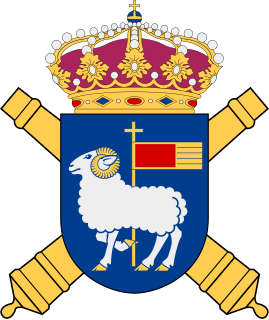 W
WThe Gotland Artillery Regiment was a Swedish Army artillery regiment that was in active service between 1811 and 2000. The regiment was based in Visby as part of the Gotland Garrison.
 W
WGotland Brigade , was a Swedish Army armoured brigade within the Swedish Armed Forces and acted in different forms between 1949 and 2000. The main parts of the basic training were held at the Gotland Regiment within the Gotland Garrison in Visby, Gotland.
 W
WThe Gotland Coastal Artillery Regiment, designation KA 3, was a Swedish Navy coastal artillery regiment of the Swedish Armed Forces which operated between 1937 and 2000. The unit was based in Fårösund in Gotland.
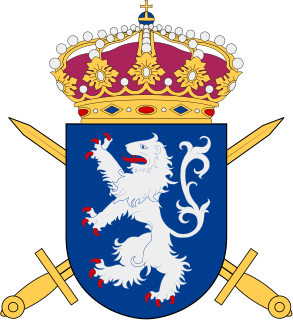 W
WThe Halland Regiment, designations I 16 and I 16/Fo 31, was a Swedish Army infantry regiment that traced its origins back to the 16th century. The regiment's soldiers were originally recruited from the provinces of Västergötland and Dalsland, but it was later garrisoned in Halland. The unit was disbanded as a result of the disarmament policies set forward in the Defence Act of 2000.
 W
WThe 5th Foreign Infantry Regiment, nicknamed the "Regiment of Tonkin", was a regiment of the French Foreign Legion created under the Third Republic, and dissolved in 2000. The history of this regiment is marked by participation in World War II, the Indochina War and the Algerian War.
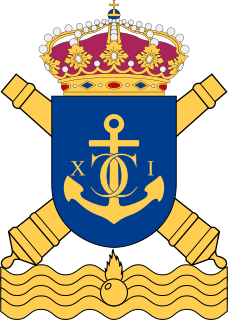 W
WThe Karlskrona Coastal Artillery Regiment, designation KA 2, was a Swedish Navy coastal artillery regiment of the Swedish Armed Forces which operated between 1902 and 2000. The unit was based in Karlskrona.
 W
WThe Lapland Ranger Regiment, designations I 22, I 22/Fo 66 and I 22/GJ 66, was a Swedish Army light infantry regiment, one of the few new formations raised in the 20th century. The regiment was garrisoned in Lapland. The unit was disbanded as a result of the disarmament policies set forward in the Defence Act of 2000.
 W
WThe Life Guard Dragoons, designated K 1, was a Swedish Army cavalry unit active from 1949 to 2000. The unit was formed as a squadron called the Life Guards Squadron (Livgardesskvadronen) in 1949, as a replacement for the previous K 1, the Life Regiment of Horse (1928–1948). In 1975 the squadron were made into a regiment, titled the Life Guard Dragoons with Stockholm Defence District, redesignated the Life Guard Dragoons in 1984. The regiment had ceremonial mounted cavalry duties, as well as training recruits and providing part of the garrison in Stockholm. In accordance with that year's Defence Act, the regiment was amalgamated into the Life Guards in 2000, thus combining the infantry and cavalry guard units of the Swedish Army.
 W
WLife Regiment Grenadiers, also I 3, was a Swedish Army infantry unit that was active in various forms 1815–2000. The unit was based in Örebro Garrison in Örebro and belonged to the King's Life and Household Troops until 1974.
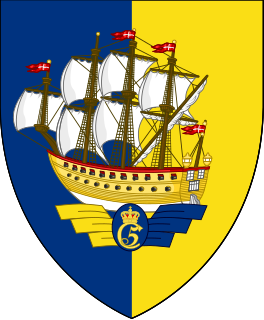 W
WThe Marine Regiment was the naval infantry of the Royal Dano-Norwegian Navy, and later an infantry regiment, established in 1672 by Christian IV and based at Glückstadt Naval Station.
 W
WThe National Guard of Ukraine is the Ukrainian national gendarmerie. It is part of the Ministry of Internal Affairs. It was originally created as an agency under the direct control of the Ukrainian parliament on 4 November 1991, following Ukrainian independence. It was later disbanded and merged into the Internal Troops of Ukraine on 11 January 2000 by then President Leonid Kuchma, as part of a "cost-saving" scheme. Following the early 2014 Ukrainian revolution on 13 March 2014, amidst the Russian intervention, the National Guard was reestablished and the Internal Troops were disbanded.
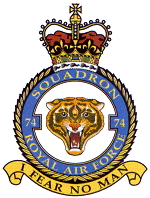 W
WNumber 74 Squadron, also known as "Tiger Squadron" from its tiger-head motif, was a squadron of the Royal Air Force. It operated fighter aircraft from 1917 to the 1990s, and then trainers until its disbandment in 2000. It was the Royal Air Force's member of the NATO Tiger Association from 1961 until the squadron's disbandment, it has since been replaced by No. 230 Squadron.
 W
WThe Norrbotten Brigade, also IB 19, NB 19 or MekB 19, was a Swedish Army armoured brigade located in the province of Norrbotten. Most of the brigade was trained at Norrbotten Regiment in Boden.
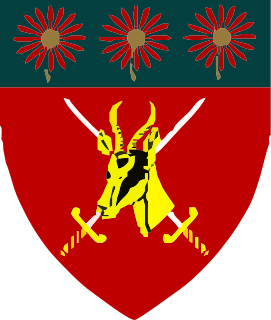 W
WNorthern Transvaal Command was a command of the South African Army. It was active from 1959 to mid 2000 when it was disestablished. Formerly it was named Northern Command from 1946 to 1959.
 W
WThe Polish 9th Fighter Regiment was a fighter regiment established in 1944 in Malbork that was a part of the Air Force of the Polish Army. The regiment was stationed in Debrzno until it was disbanded on December 31, 2000, in Zegrze Pomorskie.
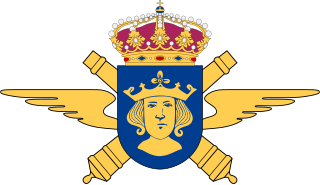 W
WRoslagen Anti-Aircraft Corps, also Lv 3, was a Swedish Army anti-aircraft unit that was active in various forms 1939–2000. The unit was based in Norrtälje.
 W
WRoslagen Marine Regiment (Swedish: Roslagens marinregemente, designation RMR, was a Swedish Navy coastal artillery unit which operated between from 1956 to 2000. The unit was based at Hamnholmen in Norrtälje Municipality.
 W
WThe Scanian Dragoon Regiment, designated P 2 and P 2/Fo 14, was an armored regiment of the Swedish Army with its roots in the 17th century. The unit was first based in Helsingborg and later in Hässleholm.
 W
WSkaraborg Brigade, designation PB 9 and MekB9, was a Swedish Army armoured brigade. It was set up in infantry regiment in 1942, as one of Sweden's first armoured brigades. The brigade's soldiers were mostly trained in the Skaraborg Regiment.
 W
WThe Småland Regiment, designations I 12 and I 12/Fo 17, was a Swedish Army infantry regiment that traced its origins back to the 16th century. The unit was disbanded as a result of the disarmament policies set forward in the Defence Act of 2000.
 W
WSödermanland Brigade, also PB 10 or MekB 10, was a Swedish Army armoured brigade located in the province of Södermanland. Most of the brigade was trained at Södermanland regiment. The brigade was decommissioned in 2000
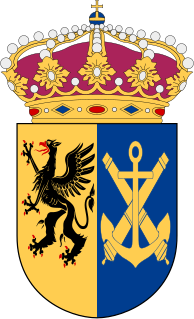 W
WSödertörn Marine Regiment (Swedish: Södertörns marinregemente, designation SMR, was a Swedish Navy coastal artillery unit which operated from 1956 to 2000. The unit was based on Järflotta south of Nynäshamn.
 W
WThe South Lebanon Army or South Lebanese Army, also known as the Lahad Army and referred to as the De Facto Forces (DFF) by the United Nations, was a Lebanese Christian-dominated militia that was founded during the Lebanese Civil War and operated as a quasi-military from 1977 until its disbandment in 2000. It was originally known as the Free Lebanon Army after its breakaway from the Army of Free Lebanon, another Christian-dominated force. After 1979, the militia mainly operated in southern Lebanon under the authority of Saad Haddad, and was based in the unrecognized Free Lebanon State. The SLA was supported by Israel, and became its primary ally in Lebanon during the 1985–2000 South Lebanon conflict against Hezbollah, a Lebanese Shia militant Islamist group.
 W
WThe Southern Army Division, was a division of the Swedish Army that operated in various forms from 1941 until 2000. Its staff was located in Kristianstad Garrison in Kristianstad. The unit was disbanded as a result of the disarmament policies set forward in the Defence Act of 2000.
 W
WThe Svea Life Guards, also I 1, was a Swedish Army infantry regiment that was active in various forms 1521–2000. The unit was based in the Stockholm Garrison in Stockholm and belonged to the King's Life and Household Troops until 1974.
 W
WThe Swedish Coastal Artillery has its origin in the Archipelago Artillery that was raised in 1866. The Coastal Artillery was formed from the Archipelago Artillery, the Marine Regiment and parts of the Artillery in 1902. Kustartilleriet, abbreviated KA, was an independent branch within the Swedish Navy until July 1, 2000, when the Swedish Coastal Artillery was disbanded and reorganised as the Swedish Amphibious Corps. The changed name and new structure were to reflect the new tasks that the old Coastal Artillery had moved to after the end of the Cold War and the demise of the Warsaw Pact.
 W
WVärmland Brigade was a Swedish Army infantry brigade. Most of the brigade's soldiers were trained at the Värmland Regiment in Karlstad. The unit was disbanded as a result of the disarmament policies set forward in the Defence Act of 2000.
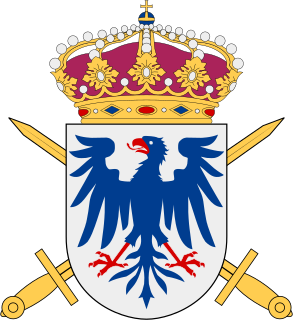 W
WThe Värmland Regiment, designations I 22, I 2 and I 2/Fo 52, was a Swedish Army infantry regiment that traces its origins back to the 16th century. The regiment's soldiers were originally recruited from the province of Värmland, where the unit was later garrisoned. The unit was disbanded as a result of the disarmament policies set forward in the Defence Act of 2000.
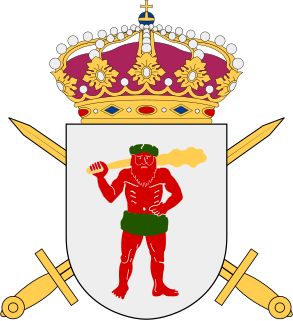 W
WThe Västerbotten Regiment, designations I 19, I XIX, I 20 and I 20/Fo 61, was a Swedish Army infantry regiment that traced its origins back to the 16th century. The regiment's soldiers were originally recruited from the province of Västerbotten, where it was later garrisoned. The unit was disbanded as a result of the disarmament policies set forward in the Defence Act of 2000.
 W
WThe Västernorrland Regiment, designation I 21/Fo 23, was a Swedish Army infantry unit which operated in various forms the years 1869–1983 and 1991–2000. It was located in Sollefteå Garrison in Sollefteå. The regiment will be re-formed in Sollefteå as Västernorrland Regiment in the fourth quarter of 2021.
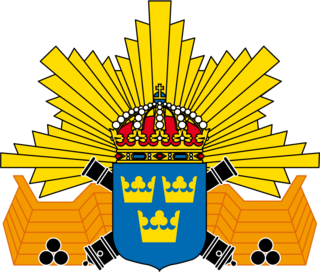 W
WThe Vaxholm Coastal Artillery Regiment, designation KA 1, was a Swedish Navy coastal artillery regiment of the Swedish Armed Forces which operated between 1902 and 2000. The unit was based at Rindö in the Stockholm archipelago in Uppland.
 W
WThe Wendes Artillery Regiment, designation A 3, was a Swedish Army artillery regiment that traced its origins back to the 17th century. The regiment's soldiers were originally recruited from Scania, where it was garrisoned. The unit was disbanded as a result of the disarmament policies set forward in the Defence Act of 2000.
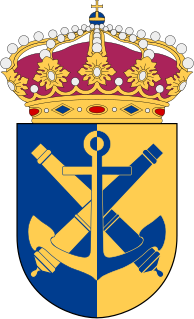 W
WThe West Coast Naval Command was a naval command within the Swedish Navy that operated in various forms in from 1928 to 2000. The unit was based in Gothenburg.